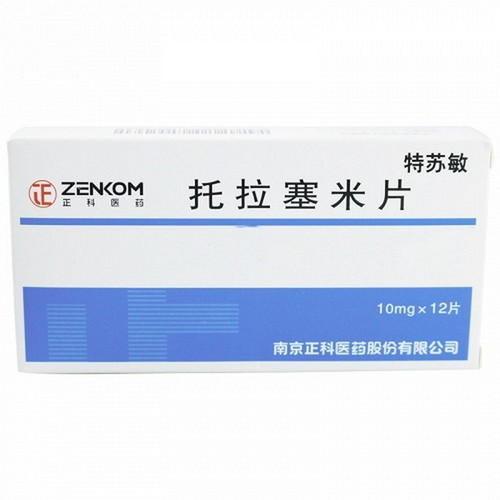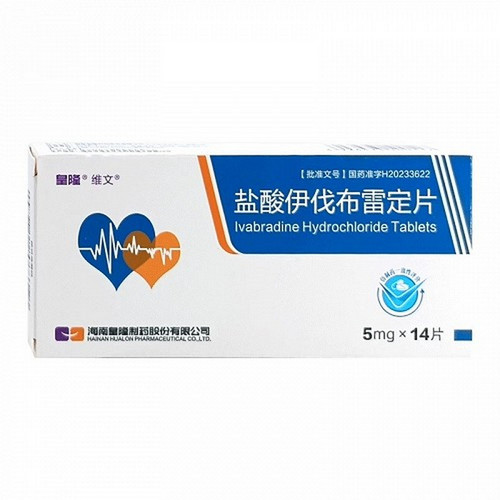Product Overview
[Drug Name]
Generic Name: Torasemide Tablets
Trade Name: Imag
English Name: Torasemide Tablets
Chinese Pinyin: Tuolasaimi Pian
[Ingredients]
The main ingredient of this product is torsemide.
[Properties]
This product is white or off-white tablets.
[Indications]
For patients with congestive heart failure, ascites due to liver cirrhosis, and edema caused by kidney disease; it can also be used for patients with essential hypertension.
[Dosage and Administration]
For congestive heart failure, renal failure, and edema caused by kidney disease: The initial dose is generally 10 mg, taken orally once daily in the morning. The dose can be adjusted based on the patient's condition, generally not exceeding 200 mg per day. For liver cirrhosis with ascites: The initial dose is generally 10 mg, taken orally once daily in the morning, taken concurrently with an aldosterone antagonist or potassium-sparing diuretic. For essential hypertension: The initial dose is generally 5 mg, taken orally once daily. If adequate blood pressure reduction is not achieved within 4 weeks, the dose can be increased to 10 mg orally once daily. If the blood pressure reduction effect is still insufficient, other antihypertensive medications should be added.
[Adverse Reactions]
Common adverse reactions include headache, dizziness, fatigue, loss of appetite, muscle cramps, nausea and vomiting, hyperglycemia, hyperuricemia, constipation, and diarrhea. Long-term, high-dose use may cause fluid and electrolyte imbalances. Polyuria is common in the early stages of treatment and in older patients. Some patients may experience hypotension due to hemoconcentration, mental disturbances, thrombotic complications, and cardiac or cerebral ischemia leading to arrhythmias, angina, acute myocardial infarction, or syncope. Hypokalemia may occur in patients with a low-potassium diet, vomiting, diarrhea, excessive use of laxatives, and abnormal liver function. Some patients may experience skin allergies, occasionally itching, rash, photosensitivity reactions, and rarely dry mouth, limb paresthesias, and visual impairment.
[Contraindications]
This drug is contraindicated in patients with anuria due to renal failure, patients in the pre-hepatic coma or hepatic coma, patients allergic to this drug or sulfonylureas, patients with hypotension, hypovolemia, hypokalemia, or hyponatremia, and patients with severe dysuria (e.g., benign prostatic hyperplasia).
[Precautions]
1. Patients using this drug should regularly check their blood electrolytes (especially potassium), blood glucose, uric acid, creatinine, and lipids. 2. Urinary dysfunction must be corrected before starting treatment with this drug. Elderly patients, especially those at the beginning of treatment, should be carefully monitored for symptoms related to electrolyte and blood volume depletion and hemoconcentration. 3. Patients with cirrhosis and ascites should be hospitalized when using this drug as a diuretic. Overly rapid diuresis in these patients can cause severe electrolyte imbalances and hepatic coma. 4. This drug can be used with an aldosterone antagonist or potassium-sparing medication to prevent hypokalemia and metabolic alkalosis. 5. Patients with benign prostatic hyperplasia may experience dysuria. Increased urine volume with this drug may lead to urinary retention and bladder distension. 6. When initiating treatment with this drug, switching from other medications to this drug, or starting a new adjunctive medication, some individuals may experience impaired alertness (e.g., while driving a vehicle or operating machinery).
[Use in Special Populations]
Precautions for use in children:
The efficacy and safety data for this drug in children have not been established; it should be used with caution. Edema due to patent ductus arteriosus and hyaline membrane disease has been observed in premature infants receiving other loop diuretics, occasionally associated with nephrocalcinosis. The stones are sometimes barely visible on X-rays, but sometimes appear staghorn and fill the renal pelvis. Some stones resolve spontaneously. The incidence of hypercalciuria is reduced when chlorothiazide is used in combination with other loop diuretics. Other premature infants with hyaline membrane disease who receive other loop diuretics have an increased risk of persistent patent ductus arteriosus, possibly due to prostaglandin E-mediated effects. The use of this drug in such patients has not been studied.
[Precautions During Pregnancy and Lactation]
1. Pregnant Women: No embryotoxic or teratogenic effects were observed in rats at doses up to 5 mg/kg/day (equivalent to 15 times and 10 times the 20 mg human dose, measured in mg/kg and body surface area, respectively) and in rabbits at doses up to 1.6 mg/kg/day (equivalent to 5 times and 1.7 times the 20 mg human dose, measured in mg/kg and body surface area, respectively). However, when the dose was increased by 4-fold and 5-fold in rabbits and rats, respectively, fetal and maternal toxicity included decreased mean body weight, increased fetal resorptions, and delayed fetal ossification. Because adequately controlled studies have not been conducted in pregnant women, and because results of reproductive toxicity studies in animals are not always predictive of human responses, the risks and benefits of using this drug in pregnant women must be carefully considered. 2. Lactating Women: It is not known whether this drug is excreted in human milk. Because many drugs are excreted in human milk, this drug should be used with caution in lactating women.
[Elderly Precautions]
In clinical trials of this drug conducted in the United States, 24% of patients were over 65 years of age, and approximately 4% were over 75 years of age. The results showed no age-related differences in the efficacy and safety of this drug in elderly patients compared to younger patients.
[Drug Interactions] 1. Hypokalemia caused by this drug may exacerbate the adverse reactions of cardiac glycosides. 2. This drug may enhance the potassium-wasting effects of salt, glucocorticoids, and laxatives. 3. Nonsteroidal anti-inflammatory drugs (such as indomethacin) and probenecid may reduce the diuretic and antihypertensive effects of this drug. 4. This drug may enhance the effects of antihypertensive drugs. 5. Continuous use of this drug or initiation of concomitant use with an angiotensin-converting enzyme inhibitor may cause excessive lowering of blood pressure. 6. This drug may reduce the effects of antidiabetic drugs. 7. High doses of this drug may exacerbate the ototoxicity and nephrotoxicity of aminoglycoside antibiotics (such as kanamycin, gentamicin, tobramycin), cisplatin preparations, and cephalosporins. 8. This product may enhance the effects of curare-like muscle relaxants and theophylline-like drugs. 9. This product may reduce the effects of norepinephrine and epinephrine. 10. This product may increase the toxicity of salicylates when used in patients with high doses.
[Pharmacological Action]
This product is a sulfonylurea-pyridine diuretic. It acts on the thick ascending limb of the loop of Henle, inhibiting the Na+/K+/2Cl- carrier system and increasing urinary excretion of Na+, K+, Cl-, and water. However, it has no significant effect on glomerular filtration rate, renal plasma flow, or acid-base balance.
[Storage] Keep in a dark, sealed container.
[Strength] 5mg
[Packaging Size] 5mg*14's
[Expiry Life] Tentatively 24 months
[Approval Number] National Medicine Standard H20040075
[Manufacturer] Company Name: Hubei Baike Hendi Pharmaceutical Co., Ltd.









